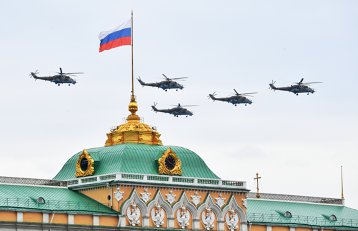
Conspiracy theories are increasing extremism- a new FBI thesis
For the first time ever, the Federal Bureau of Investigation/ FBI is placing conspiracy theories among the internal threats, according to one of agency’s documents, created on 30th of May, this year, by the FBI in Phoenix.

The document, immediately taken over by Yahoo News, although not classified, has whether law enforcement sensitive details, which refer to sensitive information, or that are for official use only, a term also used for sensitive materials, not dedicated to the public.
The references to conspiracy theories from FBI’s Bulletin are classified and analyzed considering fields and risk rates, as following:
- antigovernment conspiracy theories, coming from the intolerance against certain social groups, or targeting topics at politics’ periphery, can determine extremists to commit violent or criminal activities;
-agency’s estimations are highlighting that, for certain cases, such theories are encouraging the direction of some actions towards specific targets, people, organizations, this way increasing extremist violence risk;
-although some of the theories are benign, others are increasing serious risks, history showing that these started different genocide actions, such as witch hunting or terrorism acts;
-is nothing new that these theories- which can be developed also during the 2020 presidential scrutiny- are creating violent or criminal actions, but the development and dissemination process was modified by informatization, as Internet and the social media platforms are contributing to phenomena’s intensification.
The document is the first FBI product which examines threats through the lens of conspiracy theories and can offer a starting point for future estimations.
According to FBI, conspiracy theories are an attempt to explain events or circumstances as the result of a group of actors secretly working for their own benefit and to the detriment of others. Real conspiracies involve illegal, anti-governmental activities, which are harmful and that senior government officials and political elites have been exposed to, in the past.
The document contains many examples of actions generated by conspiracy theories and, in the annexes, it has examples of anti-government theories (New World Order, a global conspiracy led by financial and political power groups), conspiracy theories generated by intolerance against social groups (e.g. Jewish agents controlling the government) and theories outside politics’ area (Pizzagate, QAnon).
Which were the main reactions after publishing Phoenix’s office document?
…FBI…
An agency spokesman said it was standard for the FBI not to comment on specific information products. He also added that the FBI regularly shares information with its partners in local law enforcement agencies to help protecting the communities they serve.
Alike all its investigations, FBI does not ever monitor a website or a social media platform without a probable cause.
… the American media…
All the attention went on the references to Pizzagate and QAnon.
Pizzagate is a theory speculated around the 2016 election campaign, according to which John Podesta’s emails, the campaign manager of Democratic candidate Hillary Clinton, which were made public, contained coded messages suggesting the connection between several US restaurants and government officials, within a human trafficking and pedophilia group. The messages also included conversations with Comet Ping Pong pizzeria owner, James Alefantis, a supporter of the Democratic Party, about a possible campaign fundraiser, the discussions being then intensely speculated by 4Chan (dark web) platform users.
One of the consequences: an armed attack on the Comet Ping Pong pizzeria in Washington, the protagonist, Edgar Maddison Welch, being inspired by the theory.
QAnon theory refers to a plot against President Donald Trump and his supporters, conducted by the deep state, a theory also initiated on 4Chan and 8Chan, by posting a certain Q (Q Clearance Patriot), suggesting the possession of Q access permission, required for restricted data classifications. Q is also the character of an Italian novel by Wu Ming (anonymous, in Chinese), published in 1999, about a spy working on behalf of the Catholic Church. Theories’ online supporters, but also President Trump’s supporters, especially The Storm and The Great Awakening, are using the hashtag WWG1WGA - where we go one, we go all - for social media posts. Theory’s supporters believe that Donald Trump leads a backstage battle with deep state elements, represented by Hillary Clinton or by former FBI Director, James Comey.
Media Matters for America, a media monitoring organization, linked multiple violent incidents and threats to QAnon supporters: a man in Washington, who killed his brother with a sword, another from Oregon, who threatened to kill YouTube censorship employees, a person from Nevada, who blocked the Hoover dam with an armored vehicle.
Once Pizzagate and QAnon were, again, the cutting edge, it was recalled that President Donald Trump acted, in various occasions, in ways that encouraged those theories’ followers. Therefore, no matter how absurd it would seem, the Trump administration has helped promote this conspiracy theory by endorsing supporters, more or less tacitly, and amplifying their messages.
For example, Donald Trump is the author of some of theory supporters’ retweets. And he also seeks the closeness of followers in these circles (Bill Mitchell, Michael Lebron) or give various messages during rallies, considered as encouraging by those promoting QAnon.
Hence, calling conspiracy theories a threat to internal security could be a political lightning bolt for President Trump, who continues to fight with intelligence agencies.
The FBI's assessment is considered remarkable, given not only the high conspiracy theories number, but also how easily they were spread. And some of them entered the White House.
Since taking office, the president, who has claimed that Barack Obama was not born in the United States, where those who support him did, having no evidences, often suggests that he is the victim of a deep conspiracy aiming at overthrowing him. And Fox News has promoted such ideas, while President Trump has done nothing to discourage the message.
Nate Snyder, a former anti-terrorism official in the Obama administration, believes that conspiracy theory followers use the same strategic rules that groups such as ISIS and Al-Qaeda have used to inspire, recruit and carry out attacks.
He also claims that almost all, if not all, intelligence analysts who focus on internal extremist groups were eliminated by Trump and now no one in the agency is actually taking care of it.
On the other hand, FBI critics believe the bulletin contains the same excesses as agency’s previous reports referring to threats of so-called black identity extremists and it is revealed when the agency is under pressure to explain what extremist means for them and how the government is handling internal terrorism.
The FBI has previously faced criticism for using the term black identity extremists and has stated it has eliminated separate categories for black identity extremists and white supremacists, and will focus on racially motivated violence.
The focus recently put on conspiracy theories seems to fall into the broader category of anti-government extremism.
Document’s disclosure comes a week after FBI Director Christopher Wray stated, in the Senate, that white supremacist violence was the reason behind most internal terrorism cases the office investigated in fiscal year 2019, and Michael C. McGarrity, deputy director of the counter-terrorism division, mentioned the FBI's rankings on internal terrorism: racially motivated, anti-government / anti-authority, environmental extremism, pro-anti-abortion extremism.
For Michael German, a former FBI officer and a member of the Brennan Center for Justice, the document continues to promote radicalization... and contains bad ideas that pushes people to violence. It aims at justifying the mass surveillance. German hopes the significant efforts of great social media companies to eliminate or counteract potentially harmful conspiratorial content will lead to a change in the FBI's rating.
Historian David Garrow, who believes that the implicit assumption of FBI is that violence is motivated by ideological beliefs and not by mental illness, also doubts the document published by Yahoo News. For Garrow, FBI's definition comes from decades-old office paranoia.
Also, Joe Uscinski, associate professor for political science at the Miami University, whose work on conspiracy theories is quoted in the bulletin, said there is no data to suggest that conspiracy theories are more widespread now than in the past, but conspiracies are simply getting media attention.
…Russia Today
According to this publication, the frequent disclosure of real or fabricated conspiracies involving illegal, harmful or unconstitutional activities deployed by government officials or leading political figures contributes to conspiracy theories’ spread and FBI knows that exposing such plots encourages conspiracy.
The publication draws the attention on the fact that, in the same ironic note, two-thirds of Americans believe in anything other than the official JFK assassination story, while more than half believe the government is hiding information about the 9/11 terrorist attacks.
And there are others still believing in the Russian support for President Donald Trump at the elections, although the Mueller investigation ended without allegations or evidence.
But what if investigation’s result is also part of the Great Conspiracy?
Translated by Andreea Soare


